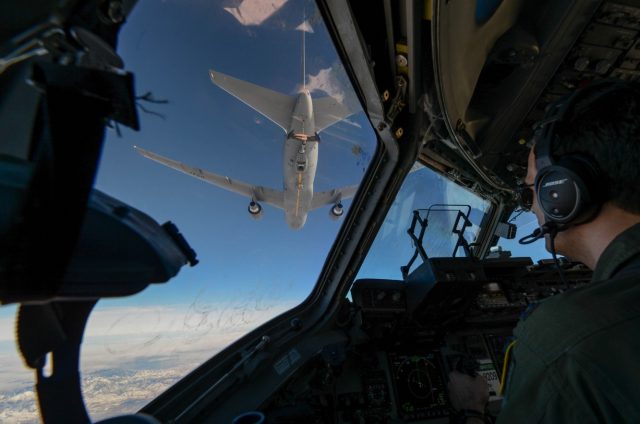
After the US Air Force cleared its new KC-46A Pegasus tanker to start limited refueling operations with the centerline drogue system mission set, the service now approved a second mission for the troubled aircraft.
The second interim capability release mission set for the KC-46A Pegasus was approved by Gen. Jacqueline Van Ovost, commander of Air Mobility Command, and will allow the KC-46 to refuel the C-17 Globemaster III, B-52H Stratofortress and KC-46 receivers using the air refueling boom mission set.
Gen. Van Ovost made the decision on the mission set on August 5, with the service releasing an announcement on August 6.
“We have reviewed many of the KC-46 operational employment criteria over the past several months and it was clear we were ready for another milestone,” said Brig. Gen. Ryan Samuelson, AMC Deputy Director of Strategy, Plans, Requirements and Programs and KC-46 Cross Functional Team Lead.
“Though a fully-mission capable aircraft is a few years away, releasing capability our KC-46 bases have demonstrated they can safely and effectively support and employ is a large part of how AMC is accelerating the KC-46 on the path to becoming fully operational and combat-ready.”
This decision enables the Pegasus aircraft and crews to accept operational taskings that would otherwise be filled by KC-135s and KC-10s and provides predicted reliability and capacity for joint force air refueling requirements, the service said.
The first ICR decision approved the KC-46A Pegasus’ Centerline Drogue System mission set on July 9, 2021.
As explained by the US Air Force, there is no timeline associated with the ICR plan, which instead focuses on establishing confidence measures that allow the AMC commander and other senior leaders to qualitatively and quantitatively assess achievements at ICR milestones. If confidence measures are not met, then a particular mission set will not be certified for operational use and crews will continue to fly training, exercise and demonstration missions until the operational confidence measures are met.
Despite restrictions and deficiencies, the KC-46 continues to demonstrate its growing operational capacity. The KC-46 has safely conducted over 4,700 air refueling contacts with C-17, B-52 and KC-46 receivers since October 2020 on various training and exercise missions.
The air force’s newest tanker is scheduled to reach initial operational capability in 2024, after a seven-year delay. As the tanker continues to grapple with issues, the service has started probing the market for a “bridge tanker program”, which would acquire commercial derivative tanker aircraft to supplement the Pegasus fleet.


























